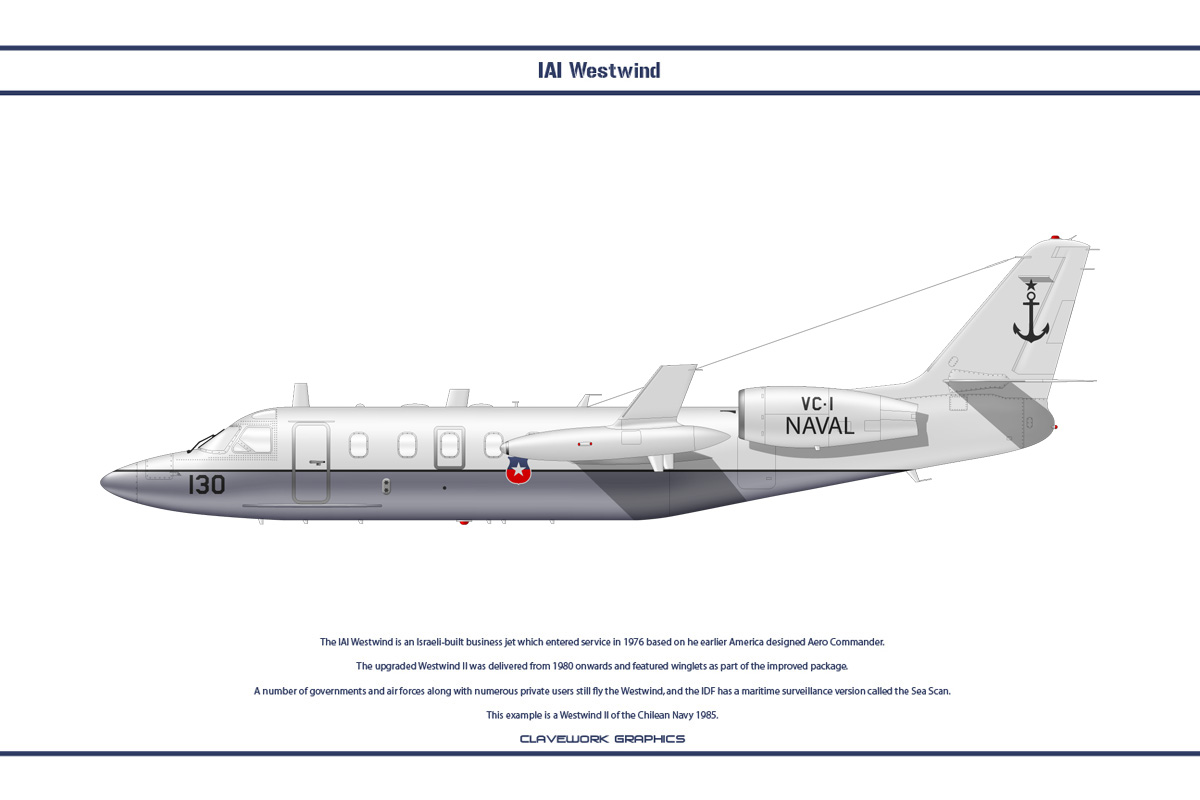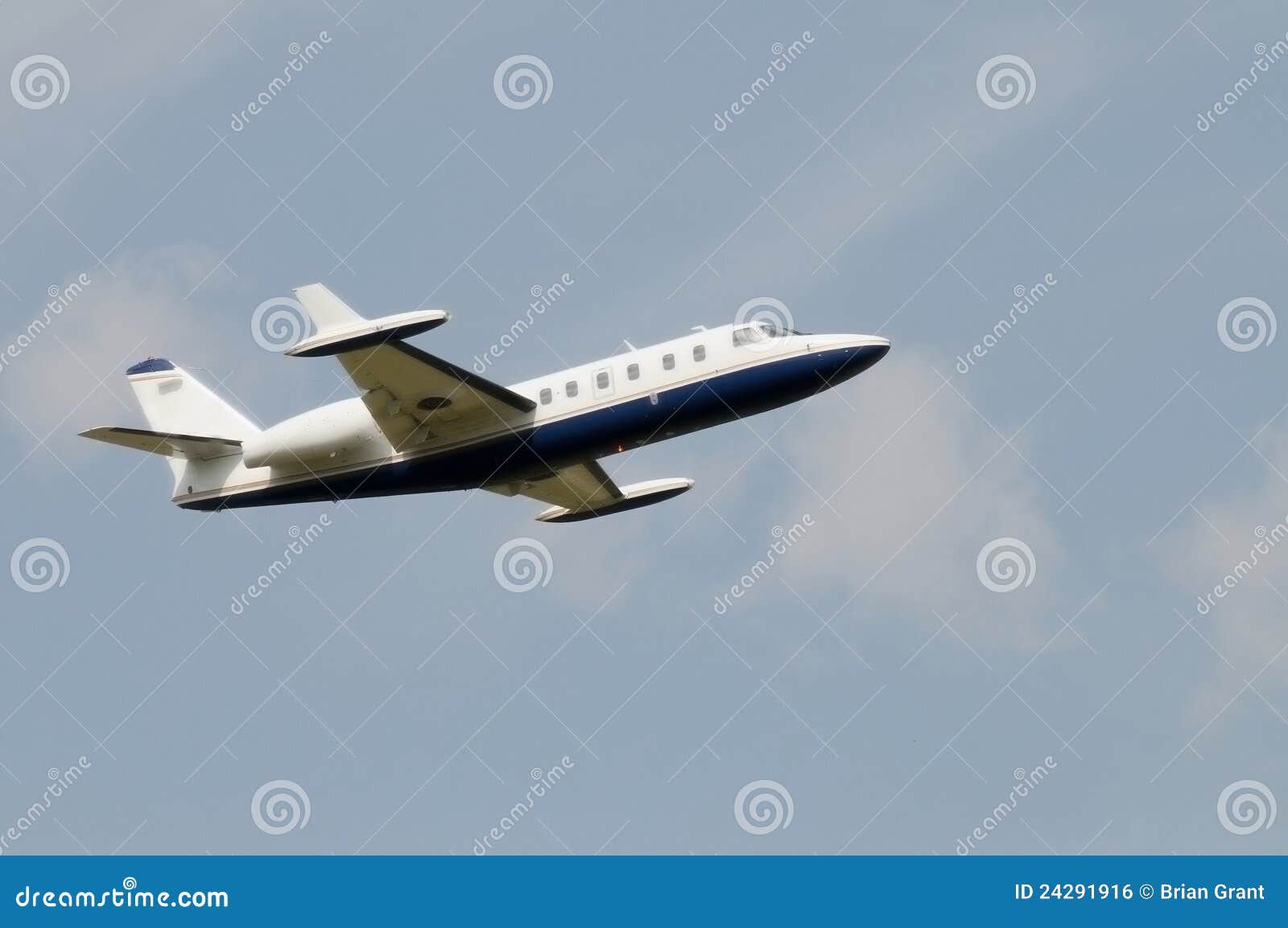Westwind 1 Aircraft - Inside, there's more space for passengers to move around when compared to similar aircraft such as a Citation or Learjet. Luggage has nearly 50 cubic feet of space in the Westwind II, while the main cabin provides travelers with nearly 150 cubic feet of room, paired with an additional 150 cubic feet for other spaces such as the lavatory and galley.
Each person typically has just over 21 cubic feet of space at capacity. The cabin is nearly 16ft long and just under 5ft for both height and width. Customers who buy a Westwind II tend to place their focus on the cabin space and what it provides for their needs, whether its the low front door or ample space for passengers or freight.
Westwind 1 Aircraft

The reduced noise in the main cabin provides those with a more appealing ride and the ability for the cargo space to hold nearly 1,000lbs is also a highlight. Westwind II direct operating cost is around $2,800 per flight hour which includes fuel burn, maintenance, and other fees customers will incur.
West Wind Ii Mission Profile
This falls above the range set of around $2,000-$2,500 by the Citation V and Lear 35, respectively. Annual fixed cost for the aircraft will be roughly $510,000, typically $90,000 more than both of the rivals. In most cases, owners are not going to let their multi-million dollar, highly technical machines sit out in the wind and rain.
Therefore, it is a safe assumption that most private jets will be stored in hangars when not in use. Aviation hull war insurance provides cover for loss of the aircraft due to war, hijacking, confiscation, malicious damage and other similar risks.
This is typically chosen by owners who will be flying private jets into hazardous destinations. This is a cost that will vary depending on the region and aircraft type. For example, the cost of labor in certain parts of the world is lower than others.

Additionally, crew for larger aircraft will typically cost more. Our experienced reps can wade through the fragmented Light Jet Sales market and help you buy, sell, trade, or lease your Westwind II with efficiency. With over a decade of experience in business aviation charter and ownership, we have the off-market aircraft sales connections and industry knowledge to put you on a path to success.
West Wind Ii Operating Cost
The Westwind II operates with two Honeywell TFE 731-3 engines with thrust capability of 3,700lbs and standard thrust reversers. The Westwind II has a max cruise speed of 455kts, which is impressive for a vintage aircraft, as it falls in between the Citation V (roughly 400kts) and the Lear 35 (470kts).
An aircraft management team provides all the necessary services required to fly the aircraft. For example, sourcing and managing pilots to make sure the aircraft is airworthy, are all tasks provided by your aircraft management company.
Landing fees will vary from airport to airport. For example, if you were to regularly fly out of La Guardia airport, New York, the cost of landing fees would be greater than if you regularly flew from Wichita National Airport.
And finally, handling fees go hand in hand with landing fees. When on the ground you will need the aircraft to be parked securely, bags unloaded and various ground services. There are typically provided by the FBO (fixed-base operator).

West Wind Ii Engines
Of course, all these services will come at a price. Acquisition cost for the Westwind II typically ranges from $470,000-$480,000. This aircraft is nearly half the price to acquire when compared to direct competitors such as the Lear 35 and Citation V. When factoring in market depreciation to total annual cost, the aircraft will price between $1.7 million and $1.8 million, roughly $300,000 more than the two
competitors. The first is liability insurance. This provides cover against loss, damage or injury to third parties. Third parties in this case include passengers, cargo and baggage. While exact details will vary from policy to policy, cover is generally not provided for the pilot in command or the actual aircraft.
Crew fees are those that you need to pay the crew during an extended stay. Additionally, crew fees are highly dependent on the length of stay and the location. For example, crew overnight expenses, such as hotels and food, will cost far more in New York City than Wichita, Kansas.
Additionally, larger aircraft require more crew. For example, most light jets are certified for single pilot use. Therefore, you could get away with just a pilot. However, larger aircraft will require at least two crew, sometimes three for a longer flight.
Westwind Ii Cost To Own
Additionally, a flight attendant may be required. The Westwind II is a sturdy aircraft ideal for medical transport and freight. These aspects also appeal to all other travelers looking for aircraft for sale as it means there's plenty of room and comfort for those inside.

Of course, this hourly variable cost is different to that of the estimated hourly charter price. This is because, per hour, charter flights cost more. There are further parties involved. The hourly charter price is the aircraft's hourly variable cost, along with factoring in fixed costs and broker fees.
This aircraft also has the ability to conduct quality short-field landings. Those who don't intend to fly frequently every year also find the Westwind II appealing as the maintenance schedule is based off of flight hours rather than the calendar intervals aircraft owners typically witness.
The mid-fuselage located wings also aid in making the ride a smooth one. These positive aspects for quality of ride and variety of travel opportunities make up for the aesthetic which may not be pleasing to some buyers.
West Wind Ii Performance Overview
Clearly, the more you fly the aircraft, the more fuel it will use. Therefore, flying 500 hours per year will result in variable costs 10 times greater than if you were to fly 50 hours per year.
Again, much like maintenance of the airframe, the more an engine is used, the more wear and tear the engine will experience. Therefore, the more hours flown, the quicker an engine overhaul will be required. Additionally, the more hours flown the more often an engine overhaul will need to be performed.

When in its optimal configuration, the IAI Westwind 1 can cruise non-stop for up to 2,750 nautical miles (3,165 miles / 5,093 km). However, when configured for the fastest cruise speed, the Westwind 1 can maintain a cruise speed of 424 knots.
Many customers searching for a Westwind II for sale find the aircraft incomparably useful for medical and cargo transports in addition to normal operation trips for travelers. The 1980s saw the beginning of production for the Westwind family, with the improvements that created the Westwind II occurring shortly after production began.
Westwind Ii Ownership Overview
Production of the type was short-lived as Israel Aircraft Industries closed the production line in 1987 with just over 440 of the family created. This then leads to the second part of private jet insurance – hull insurance.
Hull insurance policies are agreed on a value basis. That is, the value of the aircraft. Therefore, in the event of a total loss, insurers will pay the agreed value as opposed to the current market value.
Max payload for the Westwind II is 3,150lbs with a potential range of nearly 1,780nm, competitive to that of the Lear 35 as it's only a few pounds less and flies further. The Citation V falls short on both fronts.

Storage is an important element to consider given that your aircraft will need to be waiting somewhere safe and secure when it isn't in the air. Sure, there will be some days that the aircraft is away from base and at other airports.
West Wind Ii Payload
However, in most cases aircraft spend the evenings at their home base. Of course, there is the option of so-called self-management. This is where the management tasks are left with your pilot in command. However, this option is rarely selected.
Therefore, in the ownership cost example we assume an aircraft management company is involved. Its low main door appeals to the medical sector due to easy on-loading and off-loading. Additional to the appeal of the main door, the inside of the cabin has been crafted around passenger comfort, a main point being the location of the engines at the rear of the aircraft which create a quieter atmosphere inside.
Fixed costs are those that you pay no matter what. Whether the aircraft flies or not has no effect on fixed costs. These costs do not change in relation to the number of hours the aircraft flies.
westwind aircraft for sale, westwind airplane, westwind ii aircraft, westwind jet, iai westwind, westwind air, westwind jets for sale, westwind ii for sale